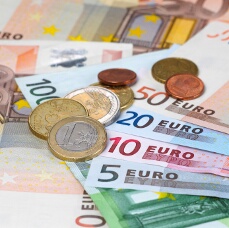The euro fell against the US dollar and the British pound on Tuesday, despite positive economic data in Germany, Europeâs biggest economy. Demand for the shared currency was faint as caution spread between traders as they worried of corrective movements that may follow a rally that lasted for months.
Destatis, Germanyâs official statistical office, released two reports earlier today on industrial production and trade balance. The first report stated that industrial production increased 3.4% in November on a seasonally adjusted basis, following a drop of 1.2% in October. The increase was considerably higher than the 1.9% gain that analysts had previously expected.
A big chunk of the increase in industrial production took place in the capital goods sector, which saw a 5.7% increase. Consumer goods also had solid gains in November at 3.6%, while intermediate goods production rose 3.0%. On the other hand, energy production fell 3.1% to drag the overall gain lower.
Meanwhile, the second report revealed that Germany exported 8.2% more goods in November 2017 from the same month a year earlier, increasing the total exports value to 116.5 billion euros. The country imported 92.8 billion euros of goods in the same month, which is an 8.3% jump from November 2016.
After adjusting the data for seasonal changes, exports rose 4.1% while imports increased 2.3% from October 2017, according to Destatis. The gap between exports and imports rose to a surplus of 22.3 billion euros from 19.9 billion euros a month earlier, beating estimates of smaller gain to 20.9 billion euros.
However, the euro had a muted response to the positive economic releases as traders preferred to remain cautious following a rally that lasted for months. The rally pushed the shared currency to the highest level since 2014 last week.
A separate report by Eurostat, the statistical office of the European Union, showed that the unemployment rate remained little in the euro area in November at 8.7% from 8.8% in October. Novemberâs unemployment rate matched expectations ahead of the release and was the lowest since January 2009.
EUR/USD traded at 1.1920 as of 13:55 GMT on Tuesday after touching 1.1919 at 13:35 GMT, the pairâs lowest level since December 28. EUR/USD began trading today at 1.1967.
EUR/GBP was at 0.8818 after falling to 0.8808 at 12:00 GMT today, the lowest level since December 19. EUR/GBP started the day at 0.8820.
If you have any questions, comments or opinions regarding the Euro,
feel free to post them using the commentary form below.
